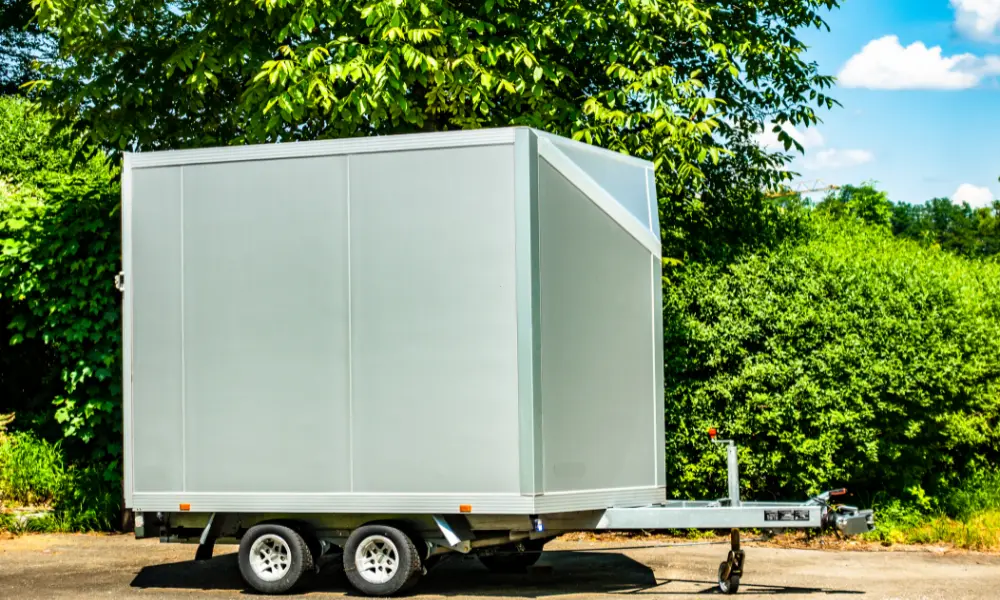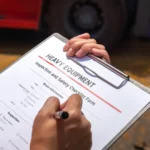Are you a North Carolina resident trying to navigate the vehicle inspection process? In North Carolina, your vehicle must pass an annual safety inspection before you can renew its registration. This includes checking your headlights, signals, brakes, steering, windows, and tires. Knowing these requirements can save you time and hassle, and ensure your car meets safety standards. Keep reading to find out more about specific steps and exceptions!
Overview of NC Vehicle Inspection Requirements
North Carolina requires that all vehicles pass an annual safety inspection to ensure they are safe to operate. In certain counties, an emissions inspection is also mandatory.
Importance of Regular Inspections
Regular inspections are crucial for maintaining your vehicle’s health and safety. They help catch potential issues before they become severe, ensuring that your car is safe for you and other road users.
In North Carolina, the Safety Inspection is mandatory for all vehicles less than 30 years old. This inspection checks essential components like headlights, brakes, and tires to ensure everything is functioning correctly. Vehicles that don’t pass this inspection won’t be able to renew their registration, affecting your ability to drive legally.
Additionally, the Emissions Inspection is required in 19 counties, including Wake, Durham, and Mecklenburg. This inspection tests your vehicle’s exhaust system to ensure it meets environmental standards. Regular emissions inspections help reduce harmful pollutants, keeping the air cleaner for everyone.
Key Components of the Vehicle Inspection Process
There are several key components in North Carolina’s vehicle inspection process. First, the Safety Inspection checks vital systems such as brakes, steering, headlights, and tires. It’s performed by a licensed mechanic who ensures your vehicle meets state safety standards.
The Emissions Inspection is equally important for certain counties. This test examines the vehicle’s exhaust emissions using on-board diagnostic equipment. Vehicles failing this test may require significant repairs costing at least $200 to qualify for a waiver if you cannot afford immediate fixes.
Your vehicle’s VIN (Vehicle Identification Number) is also verified during these inspections to ensure the vehicle’s identity matches DMV records. Without passing these inspections, your vehicle’s registration can be blocked, preventing you from legally driving in North Carolina.
Types of Vehicle Inspections in North Carolina
In North Carolina, vehicles must pass certain inspections to ensure they are safe and comply with environmental regulations. These include safety inspections, emissions inspections, and a combined safety and emissions inspection.
Safety-Only Inspection
Every year, your vehicle must undergo an Annual Safety Inspection before you can renew its registration. A licensed mechanic checks key components like brakes, headlights, signals, steering, windows, and tires.
They also inspect your vehicle’s odometer and make sure there are no issues that could affect safety on the road. These inspections aim to ensure your vehicle is safe for you and others on the road.
Emissions Inspection
In Emission Counties, vehicles are also required to pass an emissions inspection to ensure they meet air quality standards. Your vehicle’s Emission Control System will be checked using an OBDII system, which assesses the catalytic converter, exhaust system, and other emission components.
They monitor the Check Engine Light to identify potential issues. If the emissions inspection is failed, you may need to repair the emission system for compliance or apply for a waiver if repair costs meet specific conditions.
Combined Safety and Emissions Inspection
Vehicles in certain areas must pass both a safety and emissions inspection. This Combined Safety and Emissions Inspection entails a thorough check of safety features and the emission system in one visit.
Your vehicle’s engine, catalytic converter, and exhaust system get inspected to make sure they work correctly and help reduce pollution. This combined inspection is usually required for newer models up to 30 years old to ensure they meet both safety and environmental standards.
Exemptions and Special Cases
Some vehicles in North Carolina are exempt from certain inspections. This covers both older vehicles and those registered out-of-state.
Older and Newer Vehicle Exemptions
In North Carolina, vehicles that are more than 30 years old are exempt from both safety and emissions inspections. This means if your vehicle was manufactured before a certain model year, you don’t need to worry about these checks.
New vehicles are also treated differently. If your car is within the first model year or has fewer than 70,000 miles, it might be exempt from emissions inspections but could still require a safety inspection.
These rules save time and money for owners of both new and vintage cars. Always check the specific model year to see if you qualify for these exemptions.
Out-of-State Exemptions
If you move to North Carolina from another state, your car might be eligible for an out-of-state exemption. Generally, the vehicle must have passed a comparable safety or emissions inspection in the previous state.
This lets you register your vehicle in North Carolina without immediately undergoing state-specific inspections.
Inspection Process and Procedures
To ensure your vehicle is compliant with North Carolina’s safety and emissions standards, you need to follow specific procedures. These include finding a certified inspection station, understanding the inspection checklist, and knowing what to do if your vehicle fails the inspection.
Finding a Certified Inspection Station
First, you need to locate a certified inspection station. You can look for certified locations at a local dealer or dealership. Additionally, many independent mechanics are also certified to conduct inspections.
Using the official NCDMV site or contacting the NCDMV at 919-715-7000 can also help you find a nearby inspection station. Ensure the station is authorized to perform both safety and emissions inspections to avoid multiple trips.
Understanding the Inspection Checklist
During the inspection, the mechanic will check several key components of your vehicle. This includes:
- Headlights and signals
- Brakes and steering
- Windows and tires
These checks ensure your vehicle meets safety standards. For emissions inspections, the mechanic will look for any Diagnostic Trouble Codes (DTCs) that indicate emission issues.
Ensuring your vehicle is in good condition can save you time and money. Regular maintenance can help you pass the inspection without any problem.
Dealing with Inspection Failures
If your vehicle fails either the safety or emissions inspection, you’ll need to address the issues before it can pass. Ask the mechanic for a detailed report of the failed items.
You have the right to get your vehicle repaired at a different location. After repairs, return to the inspection station for a re-inspection. If the problem is related to emissions and cannot be fixed, you might qualify for a waiver under specific conditions.
Keep in mind that dealing with a malfunction promptly is crucial to keep your vehicle up to standard and avoid penalties. Contact the NCDMV if you require further assistance or have questions about the process.
Registration and Legal Considerations
When registering a vehicle in North Carolina, it’s important to understand the specific requirements and laws regarding vehicle inspections. Key points include how inspections tie into vehicle registration and the legal regulations that govern these inspections.
Linking Inspection with Vehicle Registration
In North Carolina, all vehicles must pass an annual safety inspection. This inspection must be completed within 90 days before the vehicle’s registration or registration renewal. This means that if your registration expires in December, you can only get your inspection done from October onwards.
The Department of Transportation handles these inspections, ensuring vehicles meet the safety standards. You’ll need a receipt from an authorized inspection station to complete your vehicle registration. It’s crucial to remember that all receipts are valid only up to 90 days from the date of inspection.
For vehicles over 30 years old, an inspection is not required. However, for most vehicles, the inspection covers essential components like headlights, brakes, and tires. Compliance with General Statute 20-183.2 ensures all vehicles meet safety standards.
Understanding NC Vehicle Inspection Laws
North Carolina law mandates annual safety inspections to ensure that all vehicles on the road are safe. This law, instituted by the General Assembly, applies to most vehicles, with specific exemptions based on the vehicle’s age or Gross Vehicle Weight Rating (GVWR).
The inspections are performed by licensed mechanics who check various parts of the vehicle, including steering, brakes, and lights. These inspections must comply with the regulations set out by the Department of Transportation.
Make sure you are aware of these requirements to avoid any legal issues. Any vehicle that doesn’t pass may not be registered or have its registration renewed until all necessary repairs are made. Always keep this in mind to ensure you stay compliant and safe on North Carolina roads.
Tips for Vehicle Owners
When getting ready for your vehicle inspection in North Carolina, it’s important to keep your car in good shape and be prepared for the inspection day. This guide will help you make sure your car is inspection-ready and explain what to do before heading to the inspection station.
Maintaining Your Vehicle for Inspection Readiness
Regular maintenance is key to passing your vehicle inspection. Start by checking your vehicle’s lights, including headlights, brake lights, and turn signals. Replace any bulbs that are out.
Next, ensure your brakes are working well. Listen for squeaking or grinding sounds, as these may indicate worn brake pads.
Steering and suspension are also checked during the inspection. Make sure your steering wheel doesn’t feel loose or make strange noises when you turn.
For tires, check the tread depth using a penny. Insert the penny into the tread with Lincoln’s head facing down; if you can see his entire head, it’s time to replace your tires.
Keep your OBD (On-Board Diagnostics) system in good shape by addressing any “check engine” lights. Many auto parts stores offer free OBD scans to help you identify issues.
Preparing for Inspection Day
Before inspection day, gather your vehicle documents, such as your registration and insurance. Confirm that your vehicle is clean and free from debris that might obstruct the inspection process.
Drive your car for at least 10-15 minutes before the inspection. This warms up the engine, which can help with emissions testing. Make sure not to drive the vehicle too aggressively or make sudden stops.
Arrive early to avoid long lines and ensure you have plenty of time for the inspection. If you’re the owner of a used vehicle, make sure it meets all inspection requirements to avoid any surprises.
Remember, vehicle inspections in North Carolina can be conducted no more than 90 days before your registration expires. Planning ahead will save you stress and ensure your car stays road-ready. Visit the NCDMV official page for more details.















